Removing Website Distractions for Maximum Visitor Focus

As a Web designer, it's easy to fall victim to information overload.
Every blog you visit and every person you meet has advice on what you should be doing. As such, you implement all of the advice and end up with a convoluted and distracting mess of a site. If you want to increase conversions, you have to simplify your Web design.
How to Remove Distractions
Practically speaking, we all know that it's easier to focus on a task when distractions are eliminated. What, however, is the science behind this and how does it impact Web design and conversion rates?
According to research by Google, people judge websites as beautiful or not within 1/50th to 1/20th of a second. Perhaps even more interesting is the fact that visually complex websites are consistently rated as less beautiful than simpler sites. Among other takeaways, this indicates that the human brain has a natural penchant for simple, clean sites that it can quickly process and evaluate.
From a Web design perspective, how can you remove distractions in your Web design and enjoy stronger user engagement and higher conversions?
- Use the Rule of One
Are you familiar with the Rule of One? In Web design, the Rule of One is a principle that says every page on your site should have one purpose, one call-to-action and one point of focus. By working within these parameters, you're able to not only capture your audience's attention, but you're also able to focus yourself.
"Now of course the rule of one isn't universal," marketing consultant Peter Boyle explains. "When it comes to things like social proof, three testimonials are obviously going to be better than one. Your job is to make sure that they stay within a single point of focus."
- Implement Minimalistic Navigation
For some reason, a lot of Web designers have decided that large, complex navigation is the only way to systematically organize pages and resources on their websites. However, nothing could be further from the truth. If you want to remove distractions, one of the first things you should do is implement minimalistic navigation.
Minimalistic navigation starts with the menu. There's no need to have 10 menu headings with dozens of subcategories. Simple and clean is far better. BaseballTraining.com is a perfect example. Check out the menu at the top of this page and notice how simple it is. There's no chance a user will get lost on their way to the intended destination.

-
Use a Consistent Color Scheme
A website visitor should be able to recognize your brand without ever seeing a logo. This is established through consistency. From a Web design perspective, one of the best things you can do is focus on a consistent color scheme. The HubSpot website is a good example of this. Notice how they rely on orange and white throughout their site.

- Stop With the Movement and Motion
Have you ever visited one of those websites with lots of motion, graphics, flashing advertisements and auto-play videos? Not only are these different elements distracting, but they're downright frustrating. You can hardly get through a sentence or two without diverting your eyes toward something else.
While there's a time and place for visuals, keep the movement and motion to a minimum. And if you're going to use video, consider opting out of autoplay.
Minimize Distractions, Maximize Focus
It's impossible to synthesize the secret to higher conversion rates into a single solution, but one of the best things you can do is minimize distractions. By eliminating distractions, you have the chance to maximize focus. This results in website visitors who are open to high levels of engagement.

Subscribe to Our Newsletter!
Latest in Marketing









